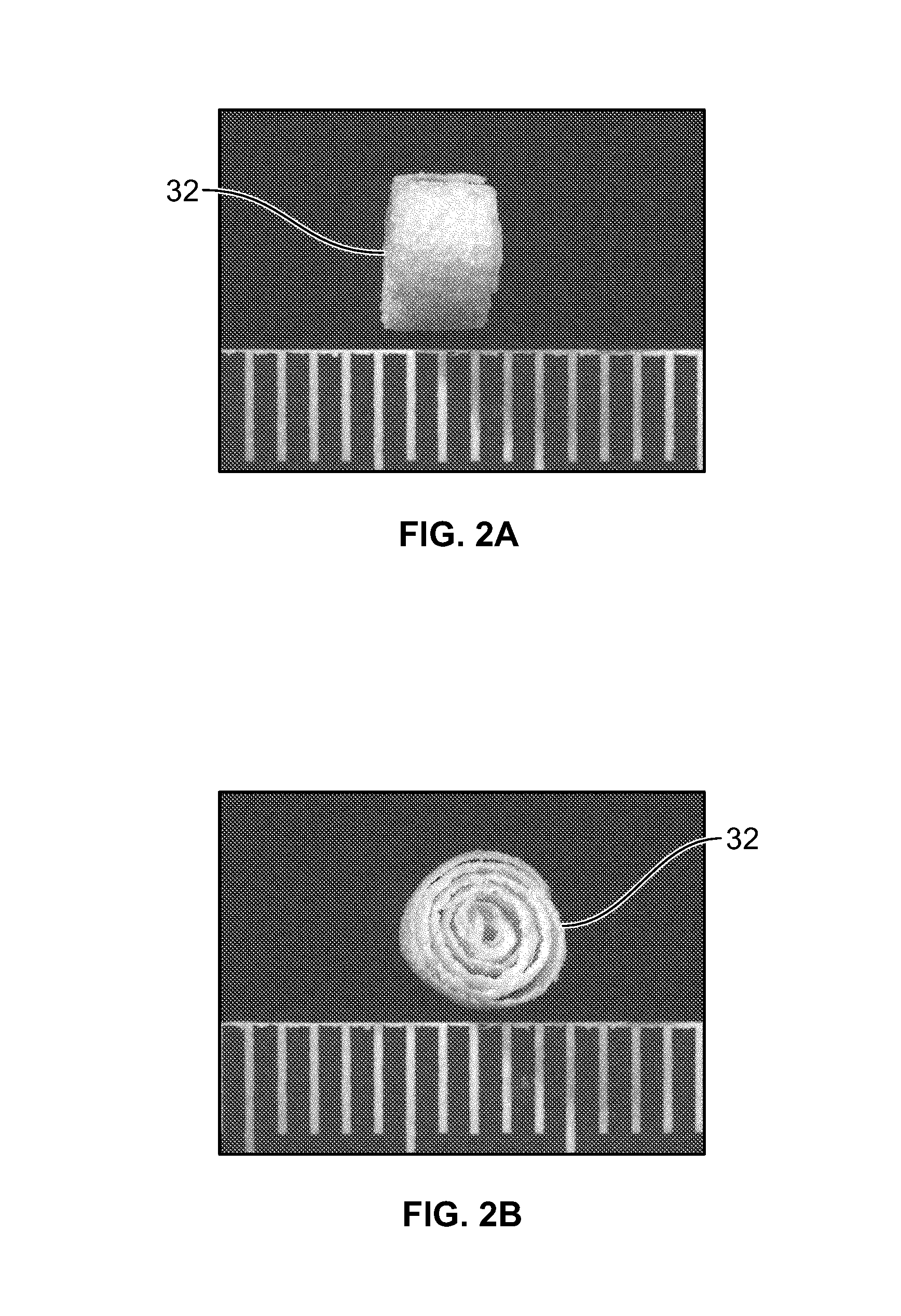Biphasic osteochondral scaffold for reconstruction of articular cartilage
a cartilage layer and scaffold technology, applied in the field of synthetic osteochondral scaffolds, can solve the problems of pain in osteoarthritis and limited movement, damage to the cartilage layer, and no gold standard, and achieve the effect of reducing pain and limited movemen
- Summary
- Abstract
- Description
- Claims
- Application Information
AI Technical Summary
Benefits of technology
Problems solved by technology
Method used
Image
Examples
example
Fabrication and Testing of an Osteochondral Scaffold
[0067]The following is a non-limiting example of the fabrication and testing of an osteochondral scaffold according to an embodiment of the present invention. This example is merely meant to show how one type of osteochondral scaffold may be made. Both the osteochondral scaffold and the method of making it are included within the scope of the present invention.
Methods
Microsphere Formation
[0068]Microspheres of PLGA / PCL in proportions of 100 / 0, 75 / 25, or 50 / 50 were prepared by mixing 100% PLGA (85-15); 75% PLGA 25% PCL (MW: 80,000); or 50% PLGA 50% PCL as 10% (w / v) solutions in dichloromethylene (DCM) To create an water-in-oil emulsion effect, a 1% (w / v) poly(vinyl) alcohol (PVA) (MW: 31,000-50,000) solution was prepared and stirred at 360 RPM with an impeller. The polymer (i.e., PLGA or PLGA / PCL) solution was then loaded into a 10 ml syringe with a 16 gauge needle. The polymer solution was then forced out in a steady stream into the...
PUM
| Property | Measurement | Unit |
|---|---|---|
| thickness | aaaaa | aaaaa |
| diameters | aaaaa | aaaaa |
| diameters | aaaaa | aaaaa |
Abstract
Description
Claims
Application Information
 Login to View More
Login to View More - R&D
- Intellectual Property
- Life Sciences
- Materials
- Tech Scout
- Unparalleled Data Quality
- Higher Quality Content
- 60% Fewer Hallucinations
Browse by: Latest US Patents, China's latest patents, Technical Efficacy Thesaurus, Application Domain, Technology Topic, Popular Technical Reports.
© 2025 PatSnap. All rights reserved.Legal|Privacy policy|Modern Slavery Act Transparency Statement|Sitemap|About US| Contact US: help@patsnap.com



